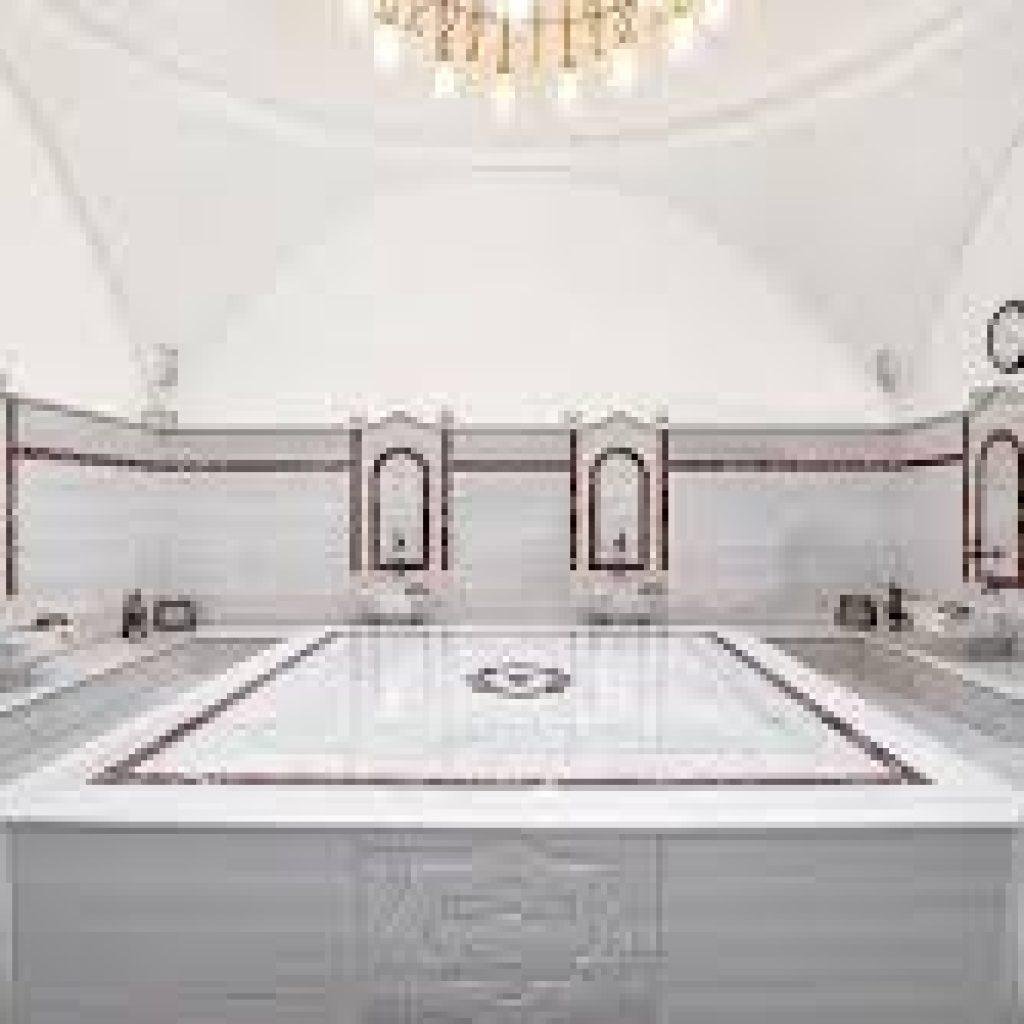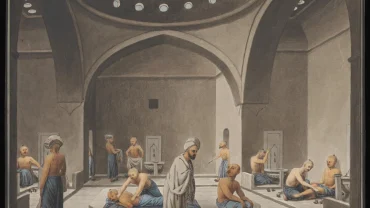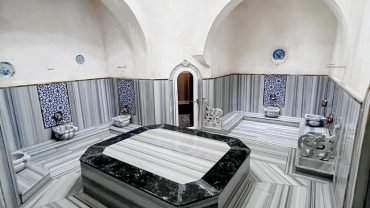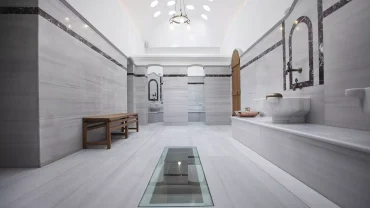Ottoman Hammam: A Journey Through a Steamy Legacy
Stepping into the world of an Ottoman hammam is to immerse oneself in a tradition that is as much about spiritual and social rejuvenation as it is about physical cleansing. For centuries, these bathhouses have been cornerstones of community life, architectural marvels, and sanctuaries of ritual.
This comprehensive exploration delves into the rich tapestry of Ottoman hammam culture, examining its historical roots, architectural genius, social significance, and the intricate rituals that have been perfected over generations.
Join us on a journey to understand why the hammam is more than just a bath; it is a profound cultural institution that continues to fascinate and invigorate.
The Historical Roots of the Ottoman Hammam
The concept of the public bath was not new to the Ottomans. They inherited and masterfully synthesized two rich historical traditions: the Roman thermae and the Islamic emphasis on cleanliness.
When the Ottomans began to expand their empire, they encountered the remnants of Roman and Byzantine bathhouses. They adapted these existing structures and engineering principles, particularly the hypocaust system of underfloor heating, to fit their own cultural and religious needs.
In Islam, cleanliness is an essential component of faith. The Quran and the Hadith, the sayings of the Prophet Muhammad, place great emphasis on physical purity as a prerequisite for prayer.
This religious imperative fueled the proliferation of hammams across the Ottoman Empire, from the bustling heart of Istanbul to the furthest provincial towns. They were often integral parts of larger mosque complexes, known as ‘kulliye,’ which also included schools, hospitals, and kitchens, underscoring their importance in daily and spiritual life.
Learn more details about Historical Ottoman Hammam
Architectural Marvels: The Design of the Hammam
The architecture of an Ottoman hammam is a masterful blend of form and function, designed to guide the bather through a specific sequence of temperature transitions. A typical hammam is comprised of three main sections:
- The Camekan (Entrance Hall): This is the grandest and most impressive part of the hammam, serving as a reception and dressing area. It is typically a large, airy hall with a central fountain and surrounding platforms or private cubicles where bathers can disrobe and relax before and after their bath. The camekan was also a social hub, a place to sip sherbet or Turkish coffee and engage in conversation.
- The Sogukluk (Cool Room): This intermediary space serves as a transition zone between the hot and cold sections. Its temperature is warm but not steamy, allowing the body to gradually acclimate to the heat of the next chamber. Toilets and shaving rooms were often located here.
- The Hararet (Hot Room): This is the heart of the hammam experience. A large, domed chamber, often octagonal or square, the hararet is heated by hot, dry air that rises through ducts in the walls and floor. In the center of the hararet lies the ‘gobek tasi’ (belly stone), a large, heated marble slab. Bathers lie on the gobek tasi to sweat and to receive massages and exfoliation. Along the walls of the hararet are private niches with ‘kurnas’ (basins) that provide a continuous supply of hot and cold water for washing.
The ceiling of the hararet is one of its most distinctive features. The high dome is dotted with small, bell-shaped glass windows. This design not only creates a beautiful, ethereal light but also allows steam to escape and prevents the condensation from dripping directly onto the bathers below.
A Social Hub: The Role of the Hammam in Ottoman Society
The hammam was one of the most important social institutions in the Ottoman world, a place where people from various walks of life could interact in an egalitarian setting. With clothing removed, social distinctions were temporarily blurred. The hammam served different, though equally vital, functions for men and women.
For men, the hammam was a place of business and leisure. Deals were struck, political news was exchanged, and friendships were forged in the steamy heat. It was a space for relaxation and camaraderie, a refuge from the pressures of daily life.
For women, the hammam held an even more profound social significance. As women’s lives were often more restricted to the domestic sphere, the hammam provided a crucial outlet for socialization and freedom. Women would spend hours, sometimes an entire day, at the hammam. It was a place to catch up on gossip, display their finest bathing attire and jewelry, and arrange marriages for their sons. Special occasions were celebrated at the hammam, including:
- The Bridal Bath : A lavish ceremony held for a bride-to-be a few days before her wedding. It was a female-only celebration filled with music, food, and dancing, where the bride was ritually bathed and adorned.
- The Postpartum Bath : A ritual bath taken by a new mother 40 days after giving birth, believed to purify and strengthen her.
The Hammam Ritual: A Step-by-Step Experience
The traditional Ottoman hammam experience is a carefully orchestrated ritual designed to purify the body and soothe the soul. While modern interpretations may vary, the core steps remain the same.
- Preparation: Upon entering the camekan, you are provided with a ‘pestemal,’ a traditional cotton wrap, and ‘nalin,’ wooden clogs to protect your feet from the hot floors. You change in a private cubicle and prepare to enter the warmer sections.
- Acclimatization and Sweating: You proceed through the sogukluk and into the hararet. The first part of the experience is dedicated to relaxation and perspiration. You can either sit in the steamy air or, more traditionally, lie on the warm gobek tasi. This process opens the pores and prepares the skin for cleansing.
- Exfoliation (Kese): After a sufficient period of sweating, a ‘tellak’ (for men) or ‘natir’ (for women), the bath attendant, will begin the exfoliation process. Using a ‘kese,’ a coarse mitt, the attendant vigorously scrubs your entire body, removing layers of dead skin with surprising effectiveness.
- Foam Massage (Kopuk Masaji): Following the exfoliation, the attendant creates a mountain of fragrant, soapy bubbles using a special cloth bag. You are then enveloped in this cloud of foam for an invigorating and cleansing massage.
- Rinsing and Cooling Down: After the massage, you are rinsed with bowls of warm and cool water from the kurnas. You then move back to the sogukluk and eventually to the camekan to relax, rehydrate with tea or sherbet, and socialize as your body returns to its normal temperature.
Popular Ottoman Hammam Booking Guide
The Enduring Legacy of the Hammam
With the rise of private plumbing in homes during the 20th century, the daily necessity of the public hammam declined. Many fell into disrepair. However, the cultural significance of the hammam has endured. Today, many historic hammams in Turkey have been beautifully restored and offer a luxurious and authentic experience for both locals and tourists.
The Ottoman hammam is more than just a place to get clean. It is a living tradition that offers a unique window into the history, architecture, and social customs of the Ottoman Empire. It is a holistic experience that engages all the senses, providing a sanctuary for the body and a balm for the soul. In a fast-paced world, the timeless rituals of the hammam offer a much-needed opportunity to slow down, disconnect, and emerge refreshed, revitalized, and deeply cleansed.







Comment (0)